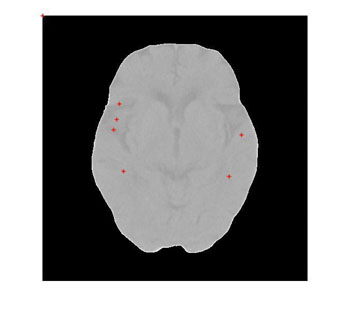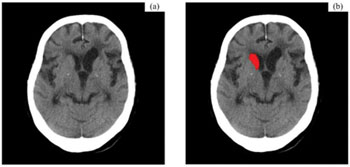New Software Designed to Ensure Faster Care, Treatment for Stroke Patients
By MedImaging International staff writers
Posted on 29 Apr 2014
New computer technology has the potential to treat people affected by ischemic stroke. Developed by researchers in Hong Kong, this innovative application that proficiently analyses brain scans could save lives by helping clinicians determine if a patient has the life-threatening disorder.Posted on 29 Apr 2014
The computer-aided design (CAD) stroke technology is capable of detecting signs of stroke from computed tomography (CT) scans. When blood flow to the brain is blocked, an area of the brain turns softer or decreases in density due to insufficient blood flow, pointing to an ischemic stroke, which is a very common kind of stroke that accounts for over 80% of overall stroke cases.
As demonstrated by Dr. Fuk-hay Tang from the department of health technology and informatics at Hong Kong Polytechnic University (PolyU), CT scans are fed into the CAD stroke computer, which will make calculations and comparisons to locate regions suspected of insufficient blood flow. In 10 minutes, scans with highlighted areas of abnormality will come out for a physician’s review. Early alteration including loss of insular ribbon, loss of sulcus and dense MCA signs can be identified, helping clinicians determine if blood clots are present.
A diagnostic tool that can accelerate the process will be greatly helpful in saving lives. Dr. Tang stated, “The clock is ticking for stroke patients. Medications taken in three hours from the onset of stroke are deemed most effective. Chances of recovery decrease with every minute passing by. It typically takes 30 minutes at best for the ambulance to arrive at the hospital. Then, another 45 minutes to one hour are then required for CT or magnetic resonance imaging [MRI] scans after the patient has been checked and dispatched for the test, which means some waiting, and time will slip by. Afterwards, the brain scan will take another 10 to 15 minutes. If our tool can help doctors arrive at a diagnosis in 10 minutes, the shorter response time will make meeting the target more achievable. It might come in handy for physicians with less experience in stroke, and patient care can be maintained in hospitals where human and other vital resources are already stretched to the limit.”
The life-saving tool can also identify slight and tiny changes in the brain that would escape the eye of even an experienced specialist, slashing the chances of missed diagnosis. False-positive and false-negative cases, and other less serious disorders that mimic a stroke can also be ruled out, allowing a fully-informed decision to be made.
Furthermore, equipped with the built-in artificial intelligence feature, the CAD stroke technology would learn by experience. With every scan passing through, along with feedback from stroke specialists, the application will improve on its accuracy over time. “It is important to identify stroke patients and help them get the urgent treatment they need,” said Dr .Tang. “Prompt and accurate diagnosis is in the forefront of our minds when designing the medical application. Healthcare professionals should focus on what they do best and let us take care of the rest.”
Related Links:
Hong Kong Polytechnic University

















